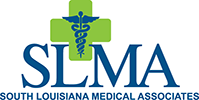Heart disease is a major issue and is often widely discussed. Unfortunately, due to its notoriety, it is all too easy for myths and misconceptions about it to spread. Understanding heart disease is the first step towards preventing it, so we would like to take the time to shed some light on the topic.
Myth: Young People Don’t Need to Worry
We see a lot of young people that think heart disease is only a problem for people who are getting older. That isn’t the case. The reality is that lifestyle factors have a big influence on a person’s risk for heart disease, so even young people can run into problems if they have an unhealthy lifestyle. Building healthy habits early is also the best way to keep them later on, so working to minimize the risk at an early age can pay dividends later on.
Myth: Heart Attacks Always Involve Chest Pain
It is true that many people feel chest pain before a heart attack, but it doesn’t always happen. Nausea, discomfort in the jaw, arms, back, or neck, or shortness of breath can also indicate a problem. Feeling lightheaded, shortness of breath and sweating are also fairly common symptoms of a heart attack.
Myth: Family Histories Make It Inevitable
We meet a lot of people who have a family history of heart disease who think that means there is nothing they can do to avoid them. That is far from the truth. While people can inherit a general tendency towards heart attacks, their lifestyle will have a much bigger impact. In fact, it is even more important for those people to maintain a healthy lifestyle so that they can control their risk of heart disease.
What Causes Heart Disease?
Some people have a hereditary predisposition to heart disease, but lifestyle factors play a bigger role. Obesity is a common risk factor, along with high blood pressure and high cholesterol. Smokers are also at a much greater risk of heart disease than non-smokers. An unhealthy diet and lack of exercise will also cause problems, in part because they encourage other risk factors. The bright side is that many people can manage their risk by getting a medical professional to help them address those issues.
Recognize the Signs and Symptoms
Heart disease is often known as the silent killer because so many people have heart attacks without any previous symptoms. Regular checkups can catch the problem early, so they are one of the best tools available. That having been said, some people do experience warning symptoms, and we encourage people to learn to recognize them.
Pain and discomfort are common problems. It often occurs around the chest, but other areas are also common, so it pays to investigate all regular pains. An irregular heartbeat can also be a sign of serious issues, especially if it happens frequently. Dizziness and weakness can also result from heart problems. Swelling around the ankles and legs can happen if the heart isn’t pumping enough blood.
We encourage everyone who experiences these problems to reach out to their doctor for an examination. It is always better to err on the side of caution, especially when it comes to the heart.

